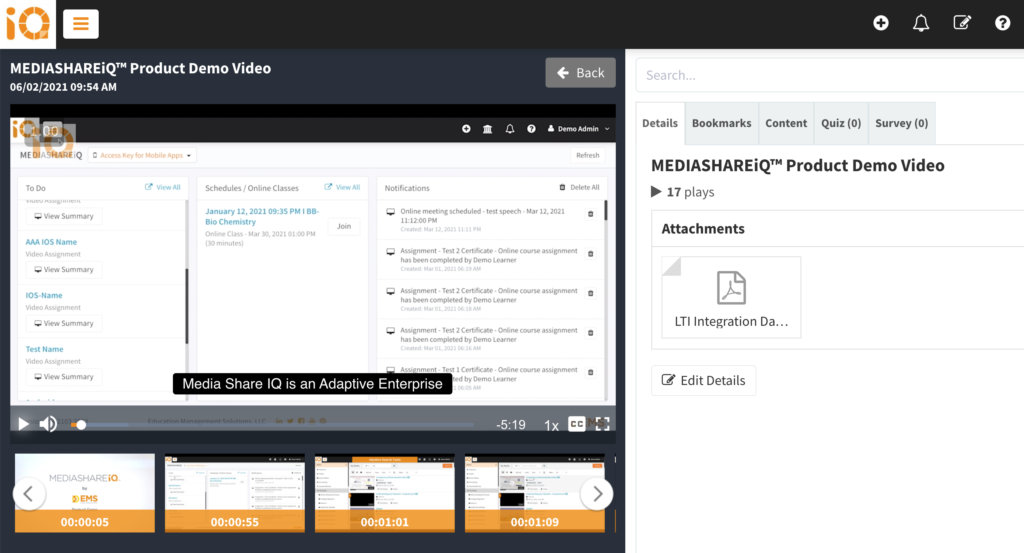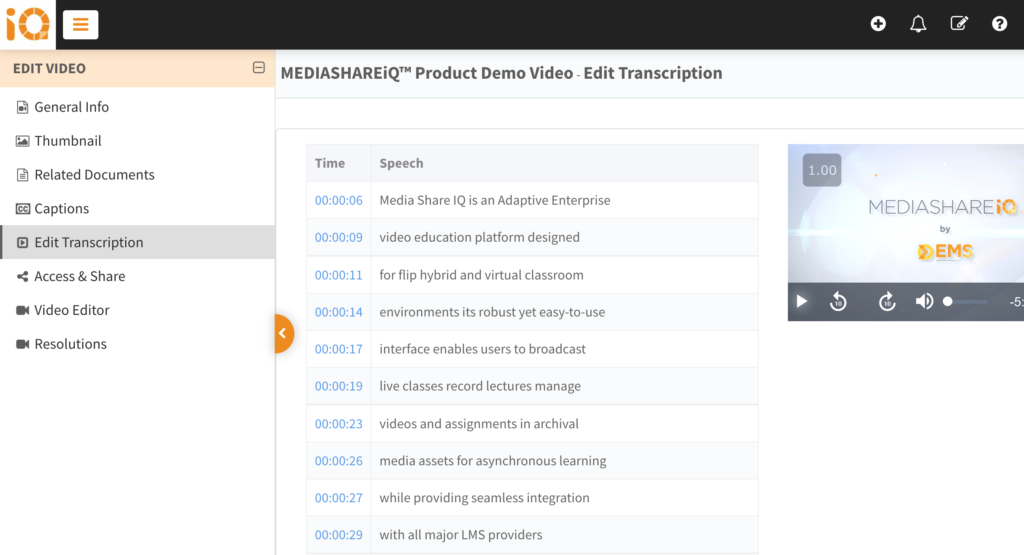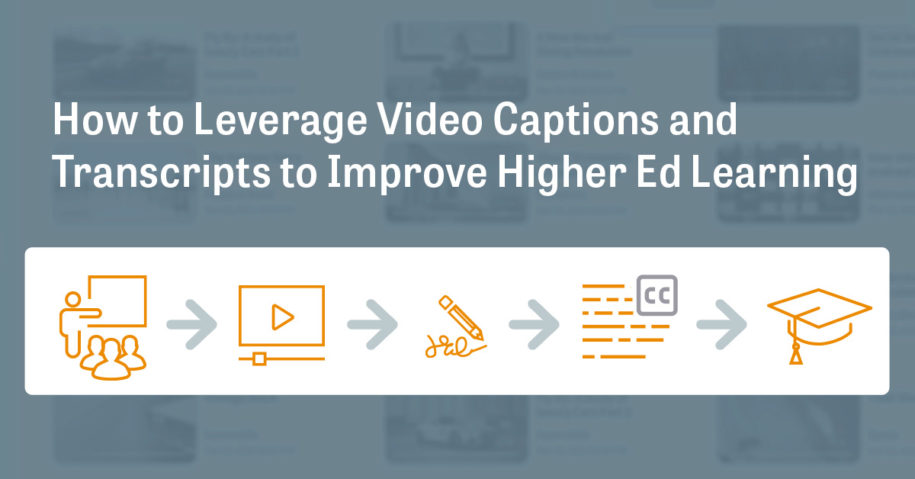While the COVID-19 pandemic caused an unprecedented disruption to higher education, it did spur several technology changes that have transformed instruction for the better. The adoption of robust video management platforms has been one improvement that has enabled instructors to teach students in real time via live stream or group meetings, or use recorded media and interactive features, such as in-video quizzes and polls, to enhance their lessons.
In preparation for the 2021-22 academic year, faculty and administrators should make a broad assessment of technologies in use, what features are lacking or underutilized, and what additional investments are needed to improve the teaching and learning experience. This should include technology instruction for faculty to improve their use of existing tools and technologies.
Two features that are often underused in advanced video management systems are video captioning and transcription.
Video captioning (also called audio captioning) is the conversion of a video’s audio content into text (captions) displayed in sync as the words are spoken. Captions can be shown in real-time (live captioned) or applied to pre-recorded video. Audio transcription is the process of producing a text document from the words spoken in a video or audio file.

Audio Captioning Goes Beyond ADA Compliance
Many universities and colleges have obligations under civil rights laws, including Individuals with Disabilities Education Act, the Rehabilitation Act of 1973, and the Americans with Disabilities Act (ADA), to ensure equal access and effective communication with people who are deaf or hard of hearing. Captioning both live and pre-recorded content falls under this requirement.
However, as video use has become more mainstream, studies have found that captioning goes beyond assisting those who are hearing impaired. Benefits include:
-
Captions improve comprehension when the speaker talks quickly, has an accent, or mumbles.
-
Captions provide clarity when names or technical terminology are mentioned.
-
Captions can assist when a video has poor audio quality or background noise.
-
Captions enable video to be watched in areas where noise is restricted, such as libraries.
-
Captions help improve concentration for viewers with learning disabilities, attention disorders, or autism.
Thanks to advancements in artificial intelligence technology that combine automated speech recognition and natural language processing, best-in-class video management systems like MEDIASHAREiQ™ can achieve up to 90% voice-to-text accuracy.
If your faculty are not applying captions to their live and recorded lectures, they should consider adopting them as a standard practice going forward.
Take Learning to the Next Level with Video Transcripts
Captions provide many benefits to viewers. But not every student is an auditory learner, and short attention spans (studies show the average adult has a maximum attention span of about 20 minutes) make it challenging for even the most engaged student to retain everything they hear during a 60-90 minute lecture.

Providing lecture transcripts to students can help strengthen their comprehension and retention of course content, while providing faculty an opportunity to improve and enhance their instruction.
-
Improve Content Comprehension
Regardless of how clear a lecture is, students will misunderstand concepts or take incomplete notes. Making transcripts of lectures available to students provides them with accurate study material, and can prompt them to spend less time taking notes and more time actively listening and asking questions during lectures. In fact, a University of South Florida St. Petersburg (USFSP) study reported that 94% of students found transcripts enhanced their learning experience.
-
Raise Student Grades
As a downloadable, editable file, a video transcript can be easily enhanced by a student with their own notes and images or repurposed into a searchable study guide to help them prepare for tests – the USFSP study also found that transcripts improved student test scores by 8%.
-
Support Disabled or ESL Students
Too often, teachers are unaware of a student’s disability or language challenges that make it difficult to follow lectures or take quality notes. Transcripts can support these students as a much-needed study aid. And because these transcripts can be downloaded as Word or text files, students can use Google Translate or another service to translate the document, if needed.
-
Make Videos Searchable
Over the course of a semester, a student may accumulate dozens of videos across multiple classes. Trying to revisit a specific topic discussed during a lecture can be a laborious process. Video transcripts enable them to be searchable. For example, MEDIASHAREiQ empowers students to perform a keyword or phrase search, see “hits” within the transcript, and jump directly to that reference in the video.
-
Enhance Instructors’ Presentation Skills
A lecture transcript can help instructors identify areas in their teaching techniques in need of improvement. Seeing speech in writing can help teachers recognize issues, such as tendencies to mumble, use filler words such as “like” or “um,” or speak in run-on sentences, that make it difficult for students to follow.
-
Streamline New Course Material
Recording and transcribing a lecture makes it easy for instructors to reuse course material from semester to semester, and aid in developing new material. Teachers can review transcripts of class discussions and student questions for future lecture content, search transcripts to identify common threads across numerous lectures, and discover areas or topics that warrant further exploration.
Ready to advance instruction at your institution? Discover how easy it is to add captions and transcripts with MEDIASHAREiQ, the industry’s best-in-class video management platform.
As the leading learner-centric online education software for virtual classroom and hybrid environments, MEDIASHAREiQ lets you broadcast live classes, record lectures, manage courses and assignments, and archive video assets for asynchronous review—all via full integration to your learning management system. Simply and easily live-stream classes, record lectures, generate captions and transcripts, and share associated course content from your PC, Mac, or mobile device.
